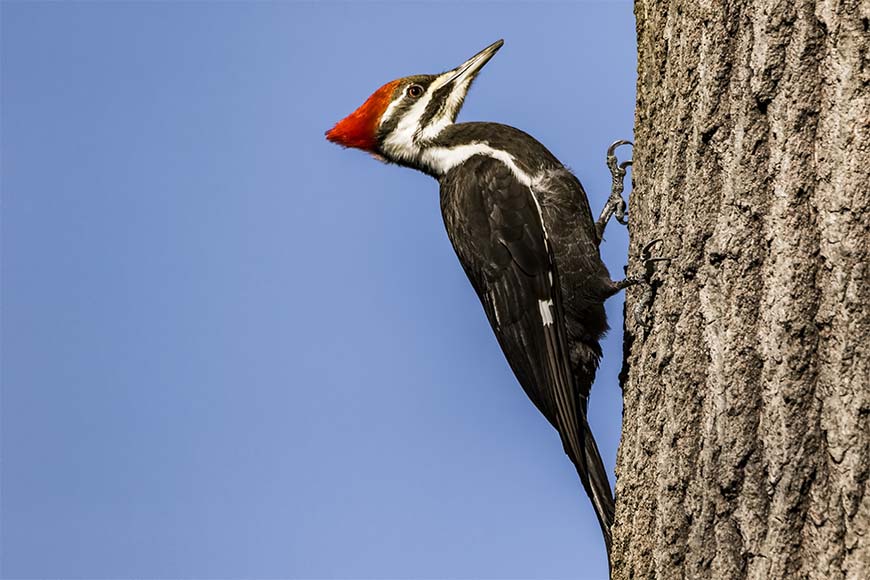
The pileated woodpecker is quite a beautiful bird, and probably the biggest woodpecker I have seen before. They are easily recognizable by their large size, around 17-19 inches in length, bigger than most common birds. They might also stand out by their fiery red crest on their head that looks like a mohawk of red.
This bird is often heard by their loud cuck-cuck-cuckcuck call long before they are seen. This call is loud, once you hear it and know the call it's unmistakable. With both a loud call and body size, pileated woodpeckers are hard to miss.
Range and habitat
The pileated woodpecker has a range that extends across the united states and into Canada. They can be found from the northeastern provinces across to the west coast and down into California. Their range in the USA goes down across the great lakes into central Texas and deep into Florida. The pileated woodpecker is absent from the plains, Rocky Mountains, and the desert southwest.
The pileated woodpecker is found in Woodlands, forests, almost anywhere trees are located, especially old-growth forests with a lot of large, old trees with dead or dying branches and trunks. They are also one of the largest backyard birds to visit suet feeders from time to time.
Identification
These are big birds as large as crows, about 17 to 19 inches. They are best known for this size, and a large red crest on their head. The pileated woodpecker is almost all black across its body with a few white spots. While both males and females are very similar in appearance you can tell them apart by a few colorations on their heads. The males will have a red streak on the side of the face while the females will be black.
Piliated woodpeckers have a distinctive flying pattern described as a flap and glide. They almost look as if they are zig-zagging through across the sky. Along with their size, this is often an easy way to identify them.
Diet
Pileated woodpeckers, like most woodpeckers, use their adapted beak and skull to chip away at tree bark and into the hardwood looking for insects to eat. Their diet consists of mostly carpenter ants in larger trees where they excavate large square holes looking for a meal. They also have an adapted tongue that is very long and able to get into tiny cracks and insect tunnels. The pileated woodpecker will also supplement its diet with anything from spiders, bugs, as well as insect larvae, fruit, and nuts.
Nesting
Pairs of piliated woodpeckers will excavate holes in tree cavities, and they have to be large enough to accommodate the birds. Trees need to be at least 16 inches wide to support the holes piliated woodpeckers will excavate. A nesting pair excavate a hole large enough to lay up to 6 white eggs. They will incubate these eggs for 18 days, and fledging takes place 5-6 weeks after that.
Piliated woodpeckers are also known for excavating alternative holes in nearby trees to provide sleeping chambers for the other parent. It is a service they provide to other wildlife such as squirrels, flying squirrels, as well as birds, raccoons, and other animals that will take shelter in these excavated holes.
